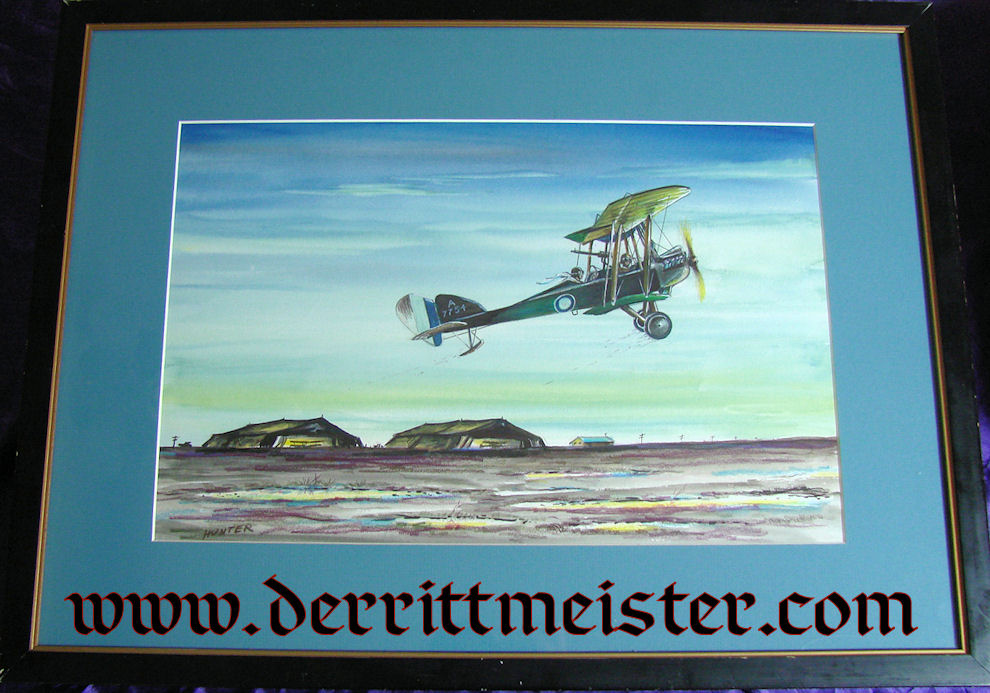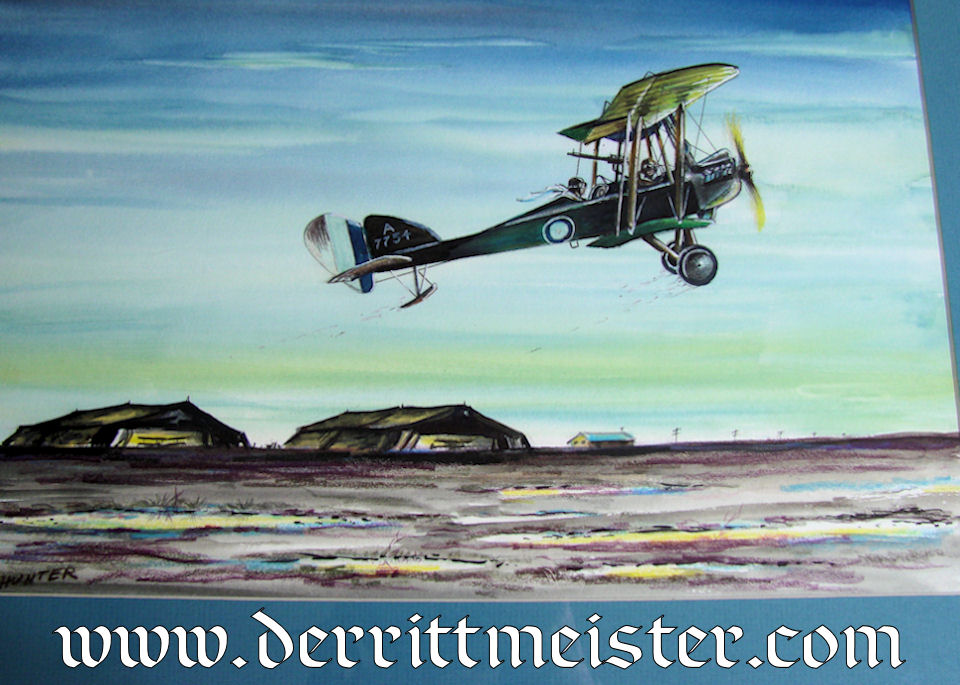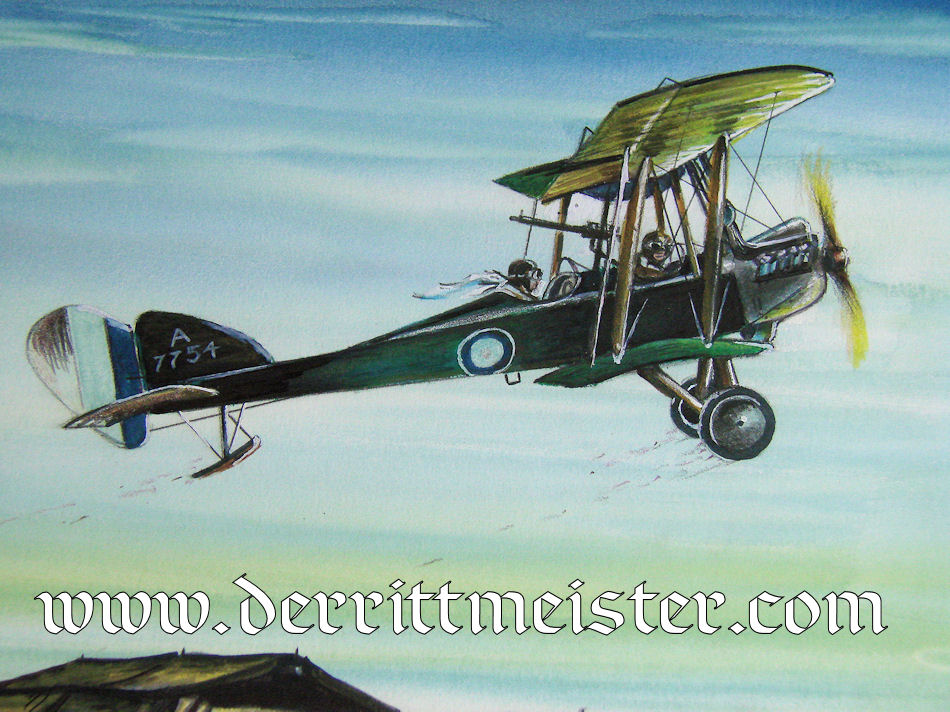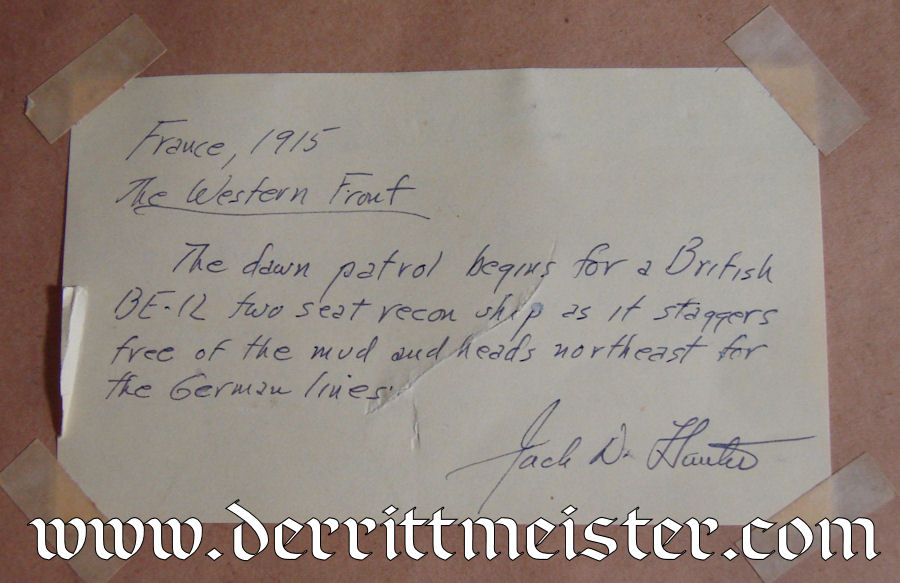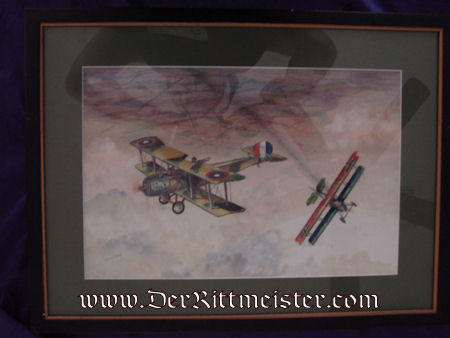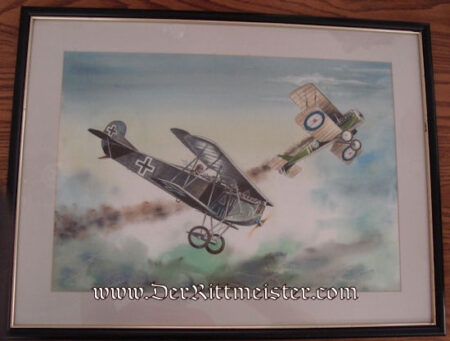Description
JACK D. HUNTER – ORIGINAL PAINTING – FEATURING BRITISH BE 2c (IDENTIFIED AS A BE 12) TAKING OFF FROM AIRFIELD
The late Jack D. Hunter was an amazing talent, and a good friend. One of my favorite “Jack” stories occurred when his first book (The Blue Max) was being prepared for publication. As was standard for first-time authors, Jack was informed that his dust jacket would be rendered in black and white (artwork AND color were too expensive for a writer without a proven sales record). Jack, however, told the publisher that HE would provide the artwork if the dust jacket was published in color. The publisher printed 5,000 (a first-time author’s standard run) hardback copies, in color, as The Blue Max’s first edition. It became a top-seller as soon as it was published, then quickly was snapped up and turned into a major motion picture starring George Peppard, James Mason, and Ursula Andress. Jack went on to write seventeen books before his 2009 death. In addition, he became a talented aviation artist whose work resides in museums’ and enthusiasts’ art collections all over the world.
Throughout his years as an artist, Jack produced paintings in two basic sizes. Today we are offering one of his paintings in the smaller, more compact size. Its simple, elegant, black, molded frame measures 14 ½” x 19 ½.” The painting’s action depicts a British BE 2c, which Jack misidentifies as a BE 12. I find this interesting, as Jack heavily researched his subjects before he began a painting. Nevertheless, we find that he has identified the plane as a BE 12, a single-seater fighter that was not used until 1916. Instead, it is the BE 2c, which preceded the BE 12 and was a two-seater observation version. We can verify our correction of Jack in two ways. First, and most important, two men are seated in the airplane as it takes off from its airfield. We can also clearly identify the two separate sections in which they are seated. Second, Jack writes that the scene is from 1915. The BE 2c had been in service since 1912, while the BE 12 would not join the RFC until August 1916.
We see Jack’s signature in the painting’s lower left portion. The painting’s simple black frame sports a small gold trim band. It has a single, blue matte. The painting’s reverse displays a very small yellow tag on which Jack describes the painting’s action. Another tag also appears, on which the original owner states that this is a very early Hunter.
